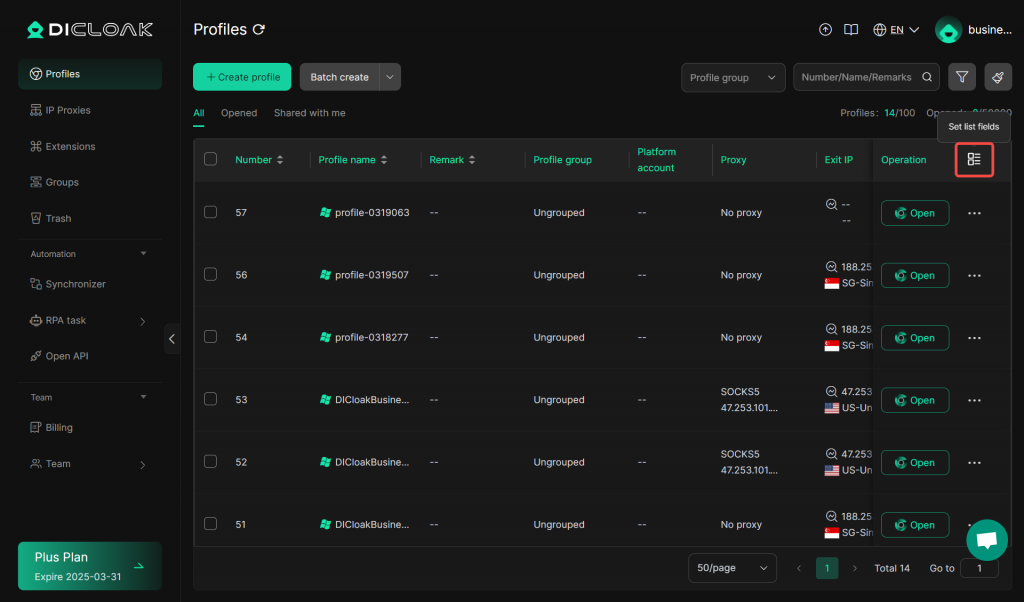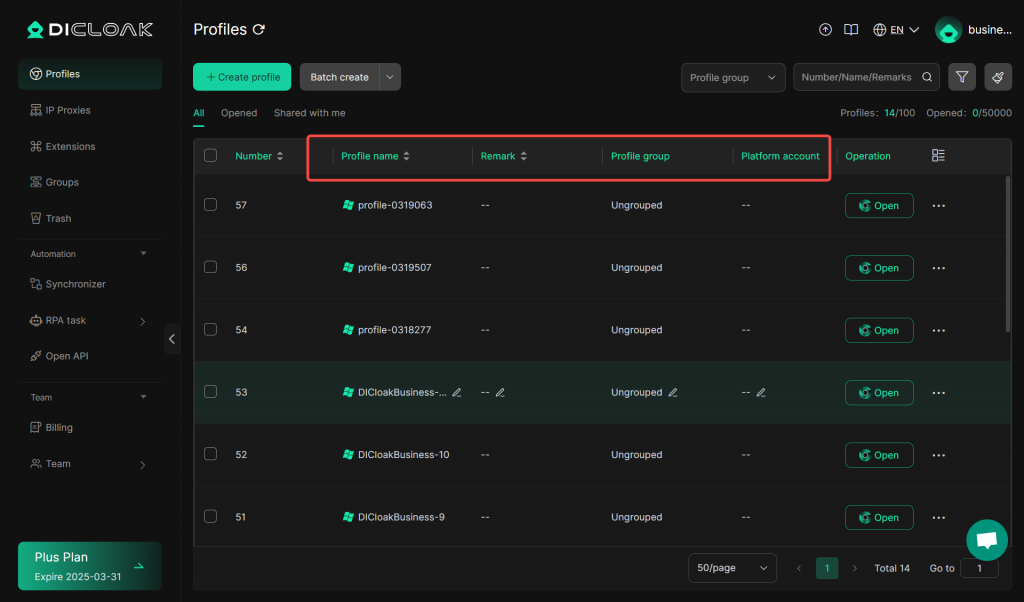DICloak allows you to customize and set the fields you want to display in the profile list view. With simple configuration, you can select the most critical items from multiple fields and highlight them in the list, while the remaining non-core fields can be hidden. This setting only applies to your own account and does not change the display fields for other members.
1.Click the list field settings icon

2.Select fields
Number is always displayed, and the visibility of other fields can be customized. You can also click and drag the icons on the right to rearrange their display order.

Click “Confirm”. After the setting is successful, the environment list will show only the selected content as shown below.
